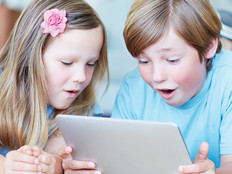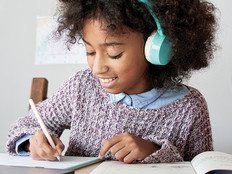Take Teaching to the Next Level: Why Technology Makes Learning Fun for All
“My favorite birthday present was my [Nintendo] DS,” announced Shelby upon her arrival at school recently. When given the choice of playing computer games or playing with others at recess, 6- and 7-year-olds often choose computer games.
Game images dance in the heads of students as they enter the classroom, evident in the movement of little hands on an imaginary pad or keyboard. Teachers must compete with these images and offer school activities that provide colorful, interactive and auditory experiences.
The Promethean Interactive Whiteboard and Active Inspire software offer endless ways to catch and keep children's attention. As one of my fellow primary teachers says, “When the board is on, they are on.”
Children learn best when three modalities – visual, auditory and kinesthetic – are addressed.
Most students are visual learners. With the use of the interactive whiteboard, lessons that were formerly written on chart paper or shown through an overhead projector are now bright and colorful and filled with rich images. Tools such as the highlighter, reveal and spotlight help focus attention on specific areas, thus helping students gain knowledge. Students can “see” the learning, and therefore it makes more sense. Instructors can add websites and video streams to lessons seamlessly. The oohs and aahs let teachers know that children are happy about this up-to-date way to learn.
Auditory learners gain from listening and then discussing new information. Students learn early skills from computer recordings of books, songs and poems. Websites such as Raz-Kids, Starfall and BookFlix assist early readers with exciting auditory input. Students enjoy listening, then chatting with a peer about the new information.
The Promethean whiteboard provides enhanced opportunities for kinesthetic learners. Studies show that learning increases when students actively use the board. Moving objects, tracing words, highlighting features and responding to a modeled lesson with hands-on objects help children learn the material at hand.
I have seen children catch on to math concepts quickly when introduced to a game on the Promethean whiteboard, then handed the manipulatives to play it with a partner. Learning is also increased when lessons on the Promethean whiteboard are mapped over to PCs and children can review or advance at their own rate.
Another exciting advancement I have noticed is with early writers who struggle to get ideas on paper because of slow sound-symbol association. Children gain automaticity by practicing on websites such as Picture Match (at the Read, Write, Think website). Students write responses on a sheet of paper first, then click on the correct answer. With repeated practice, children who struggle getting ideas on paper quickly have the ability to write words and stories. The results are amazing.
In addition to addressing modalities, technology helps children learn because computers go beyond the confines of the classroom. When children view sites such as The Weather Channel's weather.com to find out the current temperature in their town or use an online picture dictionary to hunt for words during word study, they are becoming problem solvers who are growing up in a world where computers are the norm.
We owe it to our children to keep up with the times. Today's children deserve to be taught with technology that is a part of their expanding world. With this kind of technology and related resources at our fingertips, lesson planning and teaching have never been so much fun.
Modern Resources
These resources will help you with lesson planning and with integrating a whiteboard into your classroom teaching:
Background for
lesson plans:
• Best Practice: Today's Standards for Teaching and Learning in America's Schools, by Steven Zemelman, Harvey Daniels and Arthur Hyde
• Ten Best Teaching Practices: How Brain Research, Learning Styles and Standards Define Teaching Competencies, by Donna E. Walker TilestonAids for building whiteboard lessons:
• Words Their Way: Word Study for Phonics, Vocabulary and Spelling Instruction, by Donald R. Bear, Marcia Invernizzi, Shane R. Templeton and Francine R. Johnston
• Investigations in Number, Data, and Space: investigations.terc.edu
• Reading with Meaning, by Debbie Miller







